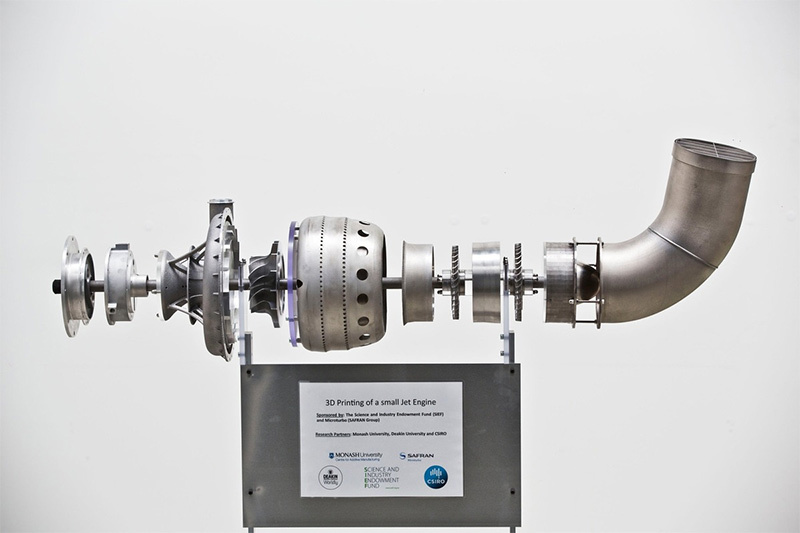The first jet engine printed on a 3D printer

While NASA is experimenting with 3D printing of a nozzle head and other spacecraft parts, engineers from Monash University (Australia) have printed and assembled a real jet engine . More precisely, even two identical copies for two exhibitions.
This is a fully functioning small turbine, which even now put on an airplane or a motor boat. Or on some homemade gadget like a jet pack to fly to the cottage.
Like NASA, the engineers applied the laser sintering method. Here used printer EOSINT M 280 .
')

The engine was printed as evidence that modern 3D printers are suitable for use in the aerospace industry. Actually, NASA has proven this before. During the tests, their rocket injector withstood the temperature of 3300 ° C, and its production was much cheaper than welding from 163 individual parts according to a standard design.
Monash University published a copy of the Microturbo (Safran) gas turbine. This is a rather old model, but it is still operated as an auxiliary power unit on airplanes like the Falcon 20.

The real engine was taken apart, every detail was scanned by a 3D scanner, and then printed out in duplicate.
Of course, industrial printers like the 1.2-tonne EOSINT M 280 are still a little expensive, but the day is not far off when workshops will be opened in each city block, where inexpensive custom metal parts will be printed. Unless the authorities intervene and prohibit ordinary citizens from using this technology. Unfortunately, this is quite likely.
Source: https://habr.com/ru/post/376901/
All Articles